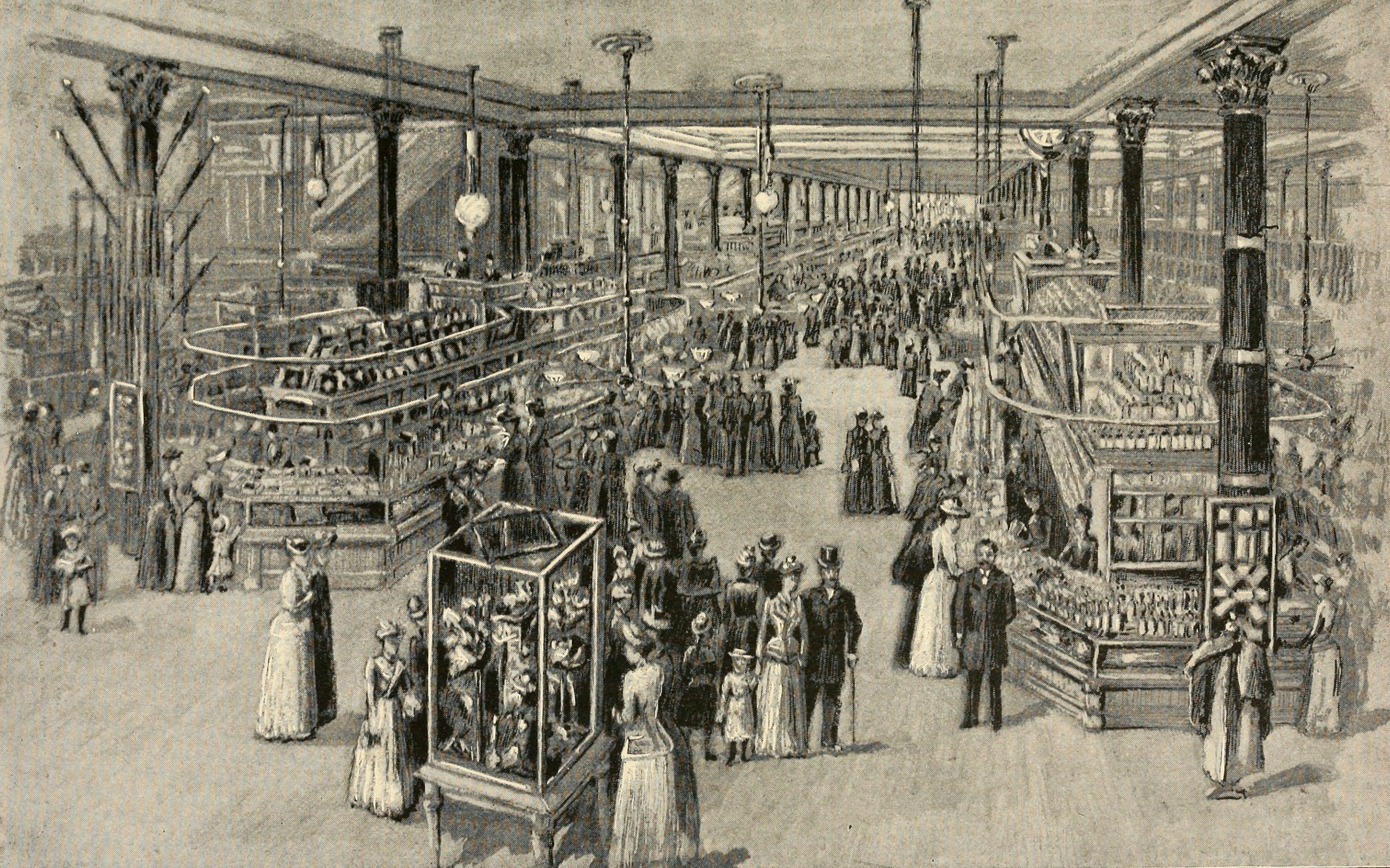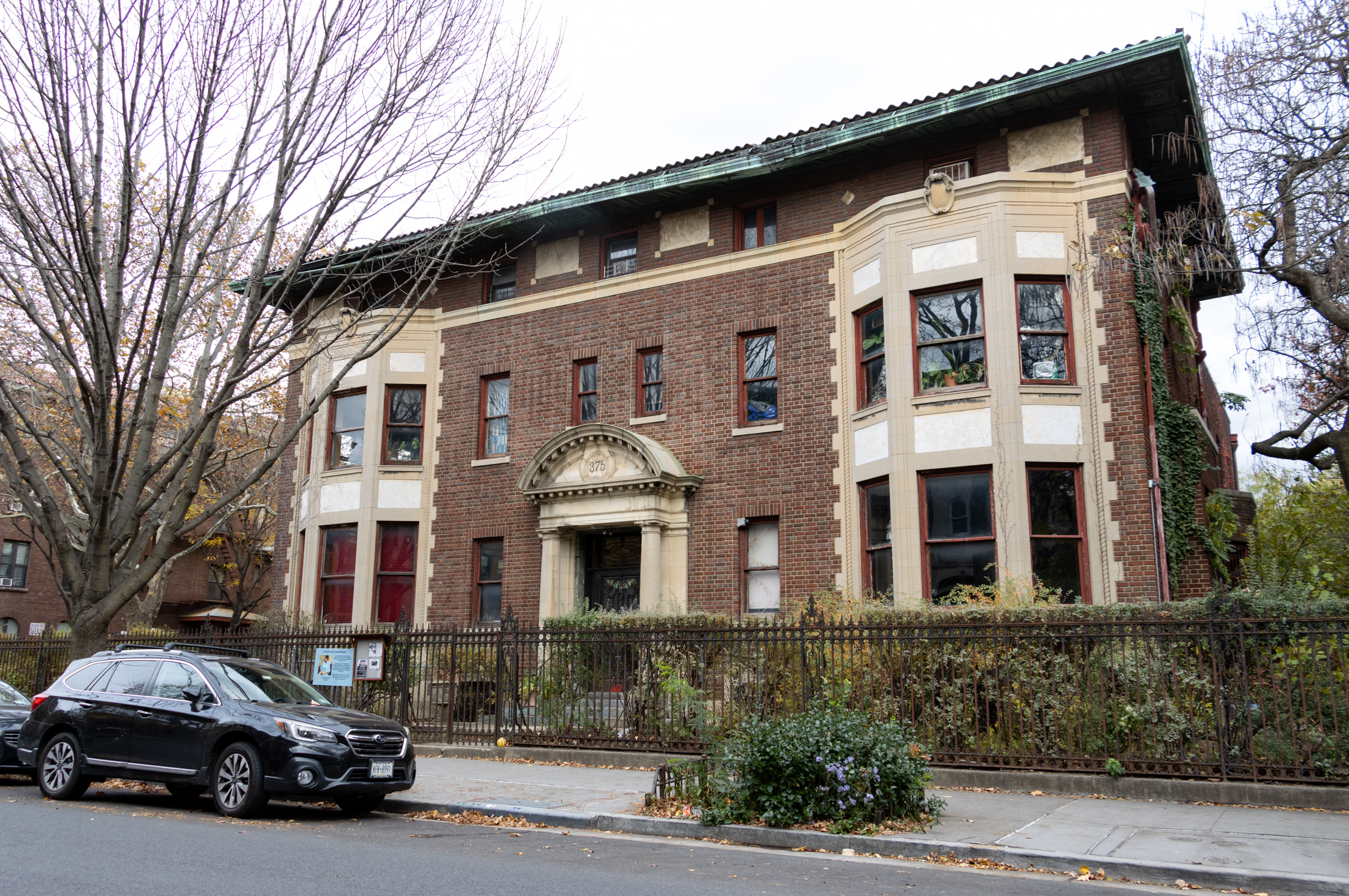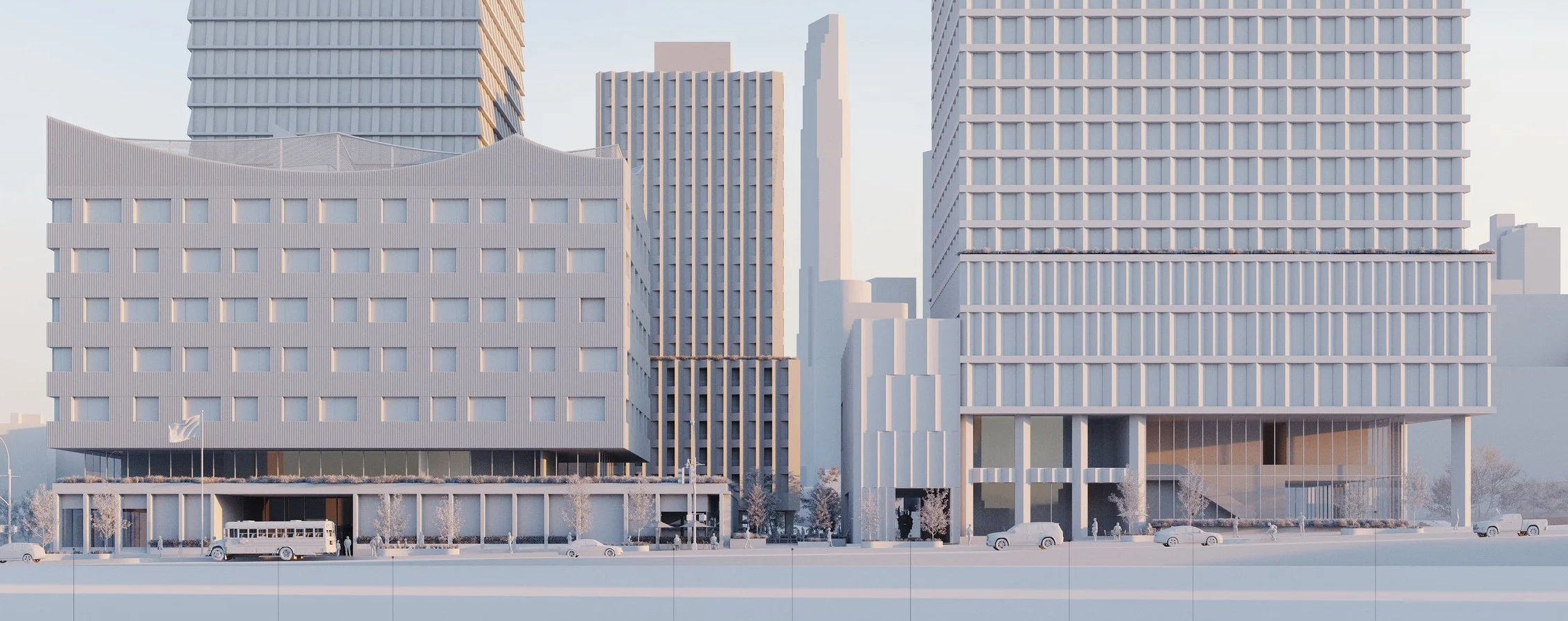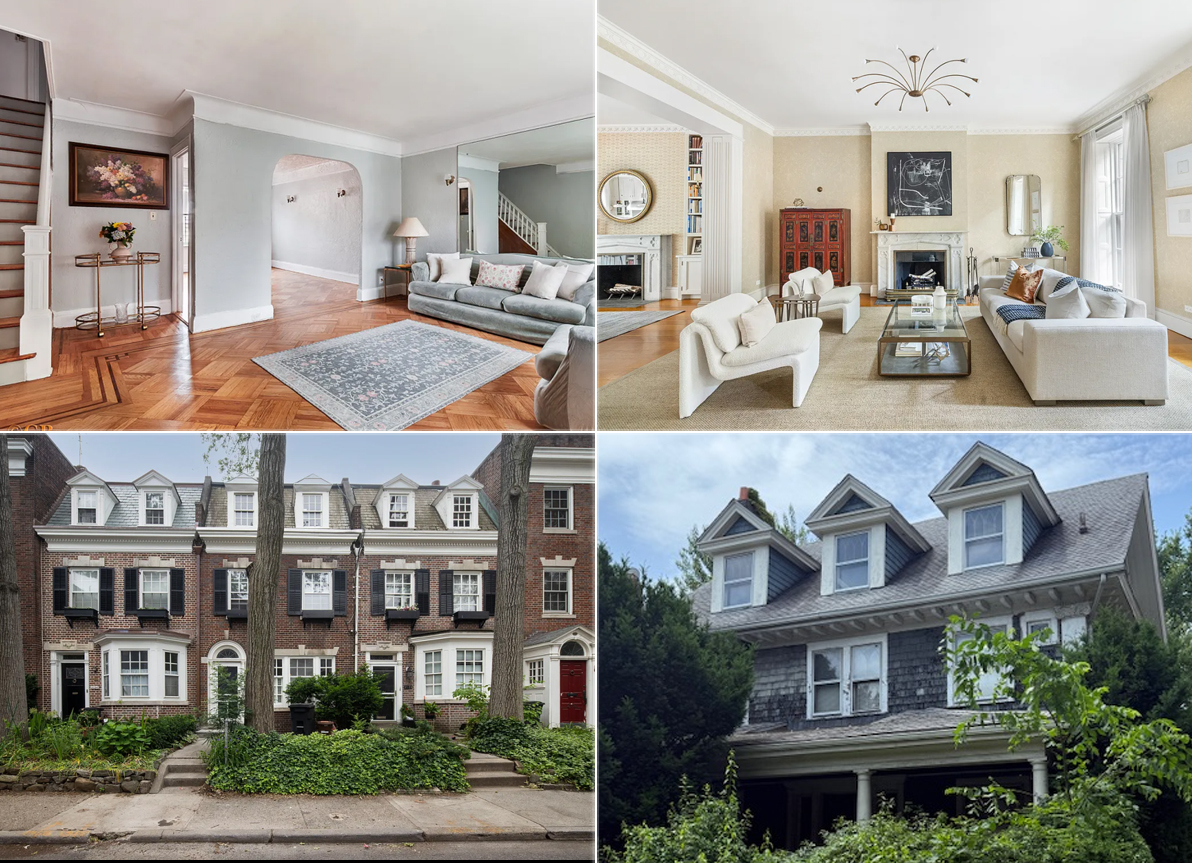Rosie and Nelson Redux
Did any of you just listen to Rosie Perez and Nelson George discussing the impact of gentrification on the neighborhoods of Fort Greene and Clinton Hill? We find Nelson’s nostalgic but realistic take on things quite interesting to hear; he’s clearly thought through a lot of these issues. Rosie’s relatively un-nuanced views, however, rubbed us…
Did any of you just listen to Rosie Perez and Nelson George discussing the impact of gentrification on the neighborhoods of Fort Greene and Clinton Hill? We find Nelson’s nostalgic but realistic take on things quite interesting to hear; he’s clearly thought through a lot of these issues. Rosie’s relatively un-nuanced views, however, rubbed us the wrong way. Her main point seems to be that she doesn’t know as many people when she walks down the street but (1) she’s a movie star now, which impacts how people view and interact with you and (2) we don’t get the sense she’s even around very much. In the four years we’ve been taking our kids to school just a few houses away from hers, we’ve never laid eyes on her; in fact, we’re not sure we’ve ever seen the shutters on her house open! (Her house also has the obligatory-for-a-Brooklyn-celeb attached garage.) She was complaining about how people fight over tennis courts in Fort Greene Park now–and then a caller reminded her that she used to have bricks thrown at her by local kids when she was playing tennis. We get how people can miss (and idealize) things from the past, but Fort Greene and Clinton Hill have to be some of the friendliest, most neighborly, streets to walk down in the entire city. How about a little love!





It does freak me out that EVERY SINGLE BABY I SEE ON THE STREET IN FT G OR CLINTON HILL IS WHITE. with maybe one or two exceptions, occasionally, and in that case it’s usually a multi-racial kid, that’s an entire generation that will grow up in this neighborhood.
That IS a huge demographic shift, and it is really sad. Are we doomed to turn Ft Greene into Park “vomit” Slope?
Seriously, y’all are complaining about how you can’t afford No. 7? If that’s the most expensive restaurant in this neighborhood, we’re still FAR FAR FAR away from being in the west village.
And what’s awesome about No. 7 is that you can actually just eat an appetizer and they’ll serve you just the same, smiling and helpful. Classy joint and THANK GOD we got those here, and not some trashy Planet Thai or some other crap dragged down from Williamsburg/LES.
No. 7 fits right in scale-wise. have you ever eaten at that gross Austrian place across from BAM that’s been here for a million years? Do you know how pricey THAT Is? nobody complained about that being around (except me, everytime I had to meet someone there).
To all of you who think newbies (3 years here) are snotty and old timers are being disrespected, wow, I wish you could walk a day in my shoes. It’s actually comical to what extent people on my block literally ignore me, point blank to my face, when I say hello. I just keep doing it because that’s what I believe in. They’re older, they’ve been here longer, and I owe them respect for that only. But man, do they make themselves look like total clowns. Hate and xenophobia looks so goddam stupid. I know it’s fear and resentment and I symbolize change, but to let it dehumanize you like that . . . it’s just sad.
ANyway, I’ll keep saying hello and smiling. Hopefully the stick will one day come out of their butts.
I eat at No. 7 with my black friends, where we are seated by a black host and waited on by an Italian waiter. We are not rich (I’m an unemployed artist). We just like good food! From a $2 hot dog in Central Park to a $150 meal at Balthazar. I can’t afford to eat at nice restaurants every week, but I do splurge every once in a while, when I want to treat myself. What’s the difference between spending $28 on an entree and $200 on a pair of customized high-top sneakers? We all have our indulgences. That’s not the issue.
Nelson George and Rosie Perez. A successful actress and an aspiring novelist. Are they not two of the people who have contributed to the demographic changes in the neighborhood? Or are they exempt from this because they are “people of color” who grew up in “the ghetto?”
This is New York City. Gentrification is a cold, hard fact of life. If you want to live in New York City, or any of its boroughs, you will be affected by gentrification. It is a wave continuously sweeping through this city. There is no escape…unless you leave.
I am of the opinion that this has very little to do with race and everything to do with class. In the gentrification game, the only color that counts is the color of your money.
Are we sure the Rehab post isn’t a joke by someone trying to caricature exactly what some of us don’t like about the new neighborhood? It’s this unreflectiveness–a complete unawareness of money and the history of the neighborhood–that galls me. Yes, I ate at No. 7 and it’s super cute and friendly: but with $28 entrees (the short ribs), this kind of place is hardly within the reach of many of us who long made this neighborhood home. You are rich if you can do $28 entrees, so for those of us in the middle class, this kind of talk hardly creates a sense of “community.” And I strongly suspect that the community is getting far less diverse financially, and simply more polarized–big difference. Its economic diversity, with a strong black cultural bent, was its strength as an urban neighborhood, and both seem to be waning (well, dead). This is probably my last year here after a dozen, since my landlords can get more money off of newer folks, so my rent is getting into unaffordable levels.
Talking about the changes here without looking at race and class what was lost for middle class people is far more naive than anything Rosie said.
On average it was when Black people moved into a white neighborhood, white people did cut and run. There were no welcome baskets and cards for them- they ran to the suburbs. gentrification is a different process altogether- Long time residents of Black and working class neighborhoods get forced out or pushed back.
There’s been plenty of comments on brownstoner over the years to the effect that if you can’t afford your neighborhood any longer, you should leave- that you have no rights to living in the place you grew up, worked in or were part of the community. The problem with that is it refuses to see the reality of neighborhoods and communities. People become attached to their homes and neighborhoods- these are healthy things for urban environments. a strong community is an asset for any neighborhood and ignoring the community only invites resentment and anger.
And I thought you were starting to get it, dirty hipster.
The attitude of many white newcomers is, I just discovered such a fabulous place, I want to make it better [for me]. Never mind that the people who were there in the first place liked it just fine the way it was.
When I moved to Clinton Hill, I confess that being surrounded by black people made me uncomfortable. Not that they paid any particular attention to me (beyond saying good morning or good afternoon of course!), but I felt out of place and conspicuous even though I was not. It took me about 6 months to feel comfortable. Since there were not a whole lot of white people with whom to commiserate and conspire, I got used to it and that was that.
Many people over the years told me that as a white woman I was taking my life in my hands to get off the train at Clinton-Washington. But although there was certainly more street crime than in Park Slope, it was never that bad where I lived.
Historically, when subtantial numbers of black people move into a white neighborhood in this city and country, the white people just cut and run. Do you expect the black population here to do the same?
And, Legion, Ft. Greene and Clinton Hill were black neighborhoods for longer than 30 years, at least since the 1960s (when the whites ran away).
Stop beating around the bush liberals and poseurs. You all know that the problem with certain neighborhoods in NYC is the fact that there is random violent crime and sometimes not so random.
As long as there continues to be a laissez faire attitude towards the thug culture which is rampant in parts of the city, you will continue to suffer through the consequences of that policy.
Nostalgia towards a past which included “wilding in the park”, two thousand plus murdered New Yorkers a year and race riots, is both stupid and naive.
Crime is deplorable in whatever form it takes and keep in mind that no person or group can really lay claim to a part of the city. Before Fort Greene became gentrified it was a black neighborhood for about 30 years, before that it was a white neighborhood for about 150 years and before that it was a native american neighborhood for about 1000 years.